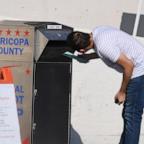Angry Italian Village Challenges New York's Met
The battle for a 2,600-year-old chariot: Monteleone vs. New York.
LONDON, May 3, 2007 — -- Nando Durastanti is a very angry man. The mayor of the Italian town of Monteleone di Spoleto has a big bone to pick with the Metropolitan Museum of Art in New York.
What, one might wonder, would a tiny mountain town, population 651, have to do with one of the world's most prestigious museums?
More than a century ago, Isidoro Vannozzi, an Italian farmer from Monteleone, dug up an ancient Etruscan chariot -- the only such chariot to be discovered intact -- showing scenes from the life of the Greek warrior Achilles.
The find -- part of a burial treasure, according to archaeologists -- was discovered with the remains of two human skeletons and two drinking cups, which enabled experts to date it to 530 B.C., making the chariot approximately 2,600 years old.
According to Vannozzi's descendants, the farmer sold the sixth-century bronze and ivory chariot to two Frenchman in exchange for a much more useful item -- two cows.
Durastanti, however, believes that the farmer actually sold it to a scrap metal merchant for 950 lire -- 65 cents in today's terms -- and bought 30 terracotta tiles with the proceeds.
No matter what the farmer got, the chariot eventually made its way into the hands of Florence-based antique dealers.
There, the famed financier J.P. Morgan is reported to have bought it for the Metropolitan Museum in 1903, according to journalist Mario La Ferla, who has written a book about the chariot.
But the Met's efforts to take the chariot to New York faced stiff resistance from members of the Italian parliament. And so, legend has it, the chariot was sent to Paris, smuggled in with a grain shipment.
There, it was stored in the vaults at Credit Lyonnais, then the world's largest bank, for an unspecified period. Finally, it was sent to New York after the museum paid an unnamed intermediary the sum of 250,000 lire -- about $17,105 in today's terms -- to transport it across the Atlantic.
The chariot's convoluted history has now led Durastanti and others in Monteleone to demand its return, claiming that it was illegally taken out of Italy.




